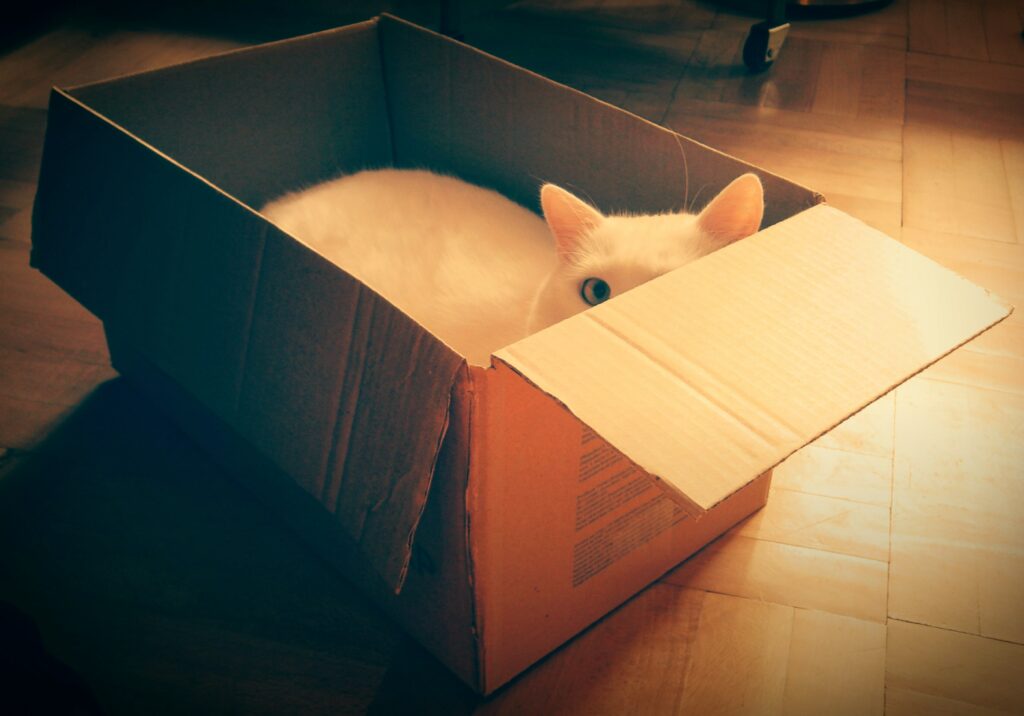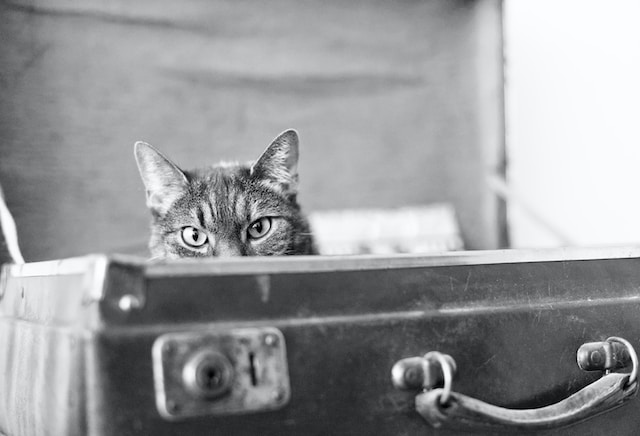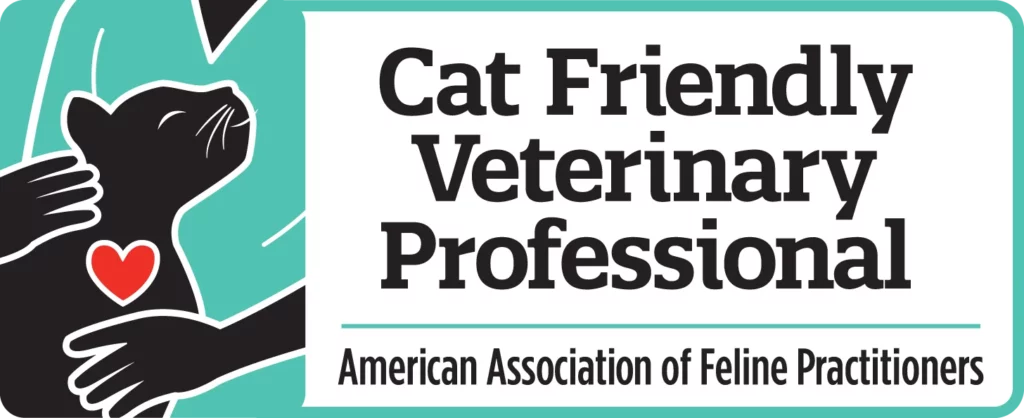If you were to pick anyone off the street and ask them their thoughts on moving (especially if they are moving with cats), chances are they wouldn’t have many positive things to say. Sure, there may be the occasional person who describes the change as being “exciting” or “an adventure,” but I highly doubt you’re going to find anyone who enjoys the actual process of packing up everything they own, hauling it to another location, and then unpacking it all again.
Much like us humans, cats aren’t going to be thrilled about moving, either. Cats don’t do well with change and may even begin showing behavioral signs of illness in response to changes in their routines. Moving to a new location is a huge change for cats. Not only will their routine be severely interrupted during the move, but they have to deal with all the changes to their familiar environment.
As caring cat owners, it’s our responsibility to ensure their safety, comfort, and well-being during the transition. We may not be able to completely eliminate all stress from a move for our furry friends, we can do a lot to reduce it.

Preparing For Moving With Cats
To avoid overwhelming your cat with too many changes all at once, you’ll want to start the process of moving early. That doesn’t mean you’ll need to begin packing everything right away, but taking a few simple steps well before your actual move date will help your cats tremendously.
Early Introduction to Moving Supplies
Introduce your cats to moving supplies, such as boxes and packing materials well in advance. Allow them to explore these items and create positive associations by placing treats or toys nearby. You can also use catnip or silver vine to chemically put them in a good mood! This gradual exposure will help them become familiar with the upcoming changes and reduce anxiety.
Thankfully, one of the most critical moving supplies, boxes, tend to be something cats love. During my most recent move, I couldn’t keep my cat out of the boxes. This was problematic for packing when I needed to use the boxes, but he seemed to think his dad was just creating a special playground for him. As long as he was happy, I wasn’t about to complain.
Create a Safe Haven
Designate a quiet room or space in your current home as a “safe haven” for your cats during the packing and moving process. Set up extras of their essential items, including litter boxes, scratching posts, a cozy bed to rest or hide in, toys, and a water fountain. If your cats seem to take a liking to any particular boxes as you’re getting them used to your packing supplies, you can even move one or two of them to their safe room.
This familiar environment will provide them with a sense of security amid the chaos. The addition of the boxes will also boost the effects of getting them familiar with your packing supplies. For an extra boost, consider adding a Feliway diffuser to the room. These diffusers disperse cat pheromones that help buffer stress for your kitty.
An important caveat to this suggestion: cats like having resources spread out rather than being confined to one space. You may stress them out more if you completely move their supplies to one room. Make sure they have cat stuff like towers and scratchers to explore throughout your home for as long as possible.
Don’t want to forget to feed your cats in the chaos? Add an automatic feeder for them. When you move to your new space, you can bring it with you and help keep feeding times consistent.
Moving Day Preparations
With all the prep work behind you, the big moving day will arrive eventually. If you’re anything like me, you’ll be a giant ball of stress on the day of the move so having a game plan for how to handle your cats day of will help all involved make it through a long day.
Bonus moving tip: if you can, hire movers. I’ve hired movers for my last few moves and holy cats was it worth every penny. For those local to Minneapolis, I’ve had excellent experiences with the Move Crew so you should check them out.
Okay, now back to cats.
You have two general strategies for managing your cats during the actual move itself (and I have one that I clearly favor): managing them while in your current home or having them stay somewhere else.
Keep Your Cat Somewhere Else
Cats can be nimble, especially when stressed out, and it isn’t uncommon for cats to be lost during a move. You want to avoid letting your cat get out as your cat may have as low as a 53% chance of returning home if they get out.
The easiest way to prevent this from happening is to completely remove them from the moving situation so they’re not in your old home while you’re moving things out or your new home while you’re loading things in. I usually take Zoloft to go stay with my parents during moves as he’s familiar with their home (especially their tables and counters, much to my lovely mother’s dismay) and it means he won’t accidentally escape should a door be opened by mistake.
If you don’t have a trusted friend or family who will let your cat hang with them for a day or two, temporarily boarding them in a well run cattery is another great option. Boarding can be stressful for cats, but it may ultimately be safer and less stressful than moving with cats at home. The actual move itself will involve a lot of noise and your cats probably won’t like all the commotion if they’re in another room. That would be much more stressful than staying somewhere safe and cozy overnight!

Minimizing Stress with Closed-Door Policy
On moving day if you are unable to or choose not to have your cats go on a mini-vacation, confine your cats to their designated safe haven with the door closed. This greatly reduces the chance of an accidental escape and reduces (but doesn’t eliminate) exposure to loud noises and unfamiliar people. Posting a sign on the door indicating it’s a cat room may help remind people to not open the door unless absolutely necessary.
Consider playing soft music to block some of the noises from the move. If you got a pheromone diffuser, you’ll want to keep that plugged in the whole time. You can also distract your cats by leaving out a food puzzle with special treats for them so they won’t be bored.
Even if you do keep the cats’ stress levels lower, there may be unexpected loud noises or things that frighten your cat. Make sure there’s nothing dangerous in their safe room that they could get hurt by. If there’s a window, keep it closed so they don’t try to escape through the window screen.
A Peaceful Journey
Eventually, you’ll have your get your cats to their new kingdom. During transportation, ensure your cats’ safety and comfort by using a secure and well-ventilated carrier. Place familiar bedding with their scent inside to provide a sense of familiarity. Covering the carrier with a light blanket can help create a cozy and secure environment, especially if you’re moving during a cold Minnesota winter!
While you won’t be able to keep a pheromone diffuser running while they are in their carrier, Feliway also makes a pheromone spray. Spray it a few minutes ahead of when your cats will be in their carriers so it has a chance to dissipate in the carrier. If your cat likes the ‘nip, there’s even a pheromone spray with catnip you can use to get them calm and a bit stoned!
Settling into the New Home
Depending on your exact arrangement, you may or may not need to take your cats to directly to the new home from the old one. There are things to consider with each, but regardless of your circumstances, you’ll want to make sure your cats are cozy, secure, and safe once they arrive.
The Familiar Scent of Home
Scent is extremely important to cats. Upon arrival at your new home, prioritize setting up a dedicated area for your cats with their familiar belongings. This includes their litter boxes, scratching posts, and bedding. These familiar items will help them recognize that the space is their territory and help ease the transition.
If you have to move your cats directly from your old home to your new one, try to pack at least some of these things in an easily accessible location. That may mean packing them in a car or having them be the last things in a moving truck. That makes it easier and lower stress for you as you’ll be able to grab them quickly, set them up, and then welcome the cats to their new home.
If your cats are able to stay somewhere else during the move, try to get as much of the space set up as you can before you bring them to their new pad. That doesn’t mean you need to get everything unpacked, but having most of your furniture set up where it will eventually live and getting anything that could be dangerous for your cat tucked away will help.
One thing I don’t recommend doing? Showing your cats the litter box. It’s completely unnecessary and something your cat doesn’t enjoy. Cats have an instinct to use certain materials to eliminate in so as long as you set up a good litter box that meets your cats’ preferences, you can (and should) skip putting their paws in the litter.
Gradual Room-by-Room Exploration
At first, your cats should be kept in a single room with all their basic supplies in it. You can then allow your cats to gradually explore their new surroundings. Start with one new room and gradually expand their access to other areas of the house over time. Supervise their explorations initially, providing encouragement and positive reinforcement.
Remember, patience is key during this adjustment period. How fast you go really depends on your individual cats so there isn’t a set timeline for exactly how to do this. If your cats tend to be more high stress or anxious in general, go slower. If you start noticing any concerning behavior changes during the introduction, that also indicates you’ll want to take a few steps back to reassess what’s happening.
Seeking Professional Guidance
There are some situations where it’s helpful to call in the pros for your cats. If your cats show signs of distress or struggle to adjust to the new environment, consider consulting a professional cat behaviorist. These experts specialize in understanding feline behavior and can provide invaluable guidance tailored to your cats’ specific needs. They can be especially helpful to address any unexpected or severe challenges and ensure a smooth transition.
If the stress and anxiety are really severe, it may be necessary to consider medication for your cats. As long as your veterinarian determines it’s safe and appropriate, these can be a great tool to help get your cats feeling at home quicker. If you aren’t sure, it never hurts to set up an appointment with your veterinarian to discuss options and get additional guidance. They’re there to support you regardless of what you decide!
Moving with cats requires thoughtful planning and consideration to ensure their safety and comfort. By preparing your cats in advance, creating a safe haven, and gradually introducing them to their new home, you can help minimize stress during what could otherwise be a very rocky transition. Remember, the journey to a new home is an opportunity to strengthen your bond with your feline companions. If you or your cats need additional support, there are professionals who can offer expert advice and guidance throughout the process.
Wishing you and your cats a smooth and successful move to your new home!










